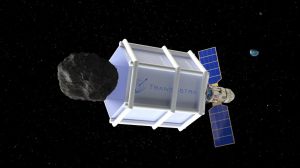ISRO says it can produce snooper satellite in a year
BANGALORE, JUNE 22: India could have, perhaps, detected the intrusions in Kargil if it had a spy satellite in place. The Indian Space Res...

BANGALORE, JUNE 22: India could have, perhaps, detected the intrusions in Kargil if it had a spy satellite in place. The Indian Space Research Organisation (ISRO) says it can fly one as soon as user agencies place a demand, and it certainly won’t take longer than a year to fabricate a good spy satellite.
A sharp-eyed bird in the sky is probably the easiest way to monitor the movement of enemy troops. America and Russia routinely use spy satellite data as part of their overall intelligence gathering.
ISRO has already mastered the fabrication and launch of satellites, and making a spy satellite that can detect objects as small as a metre across is certainly within its capacity, says ISRO Chairman K Kasturirangan.
The Indian remote sensing satellites have an enviable resolution of 6m, the best among the civilian satellites flying around the world, but it is not good enough for intelligence work.
ISRO and the armed forces held a series of joint meetings a few years ago during which ISRO showcased itstechnical capability to design and launch an indigenous surveillance satellite that would in a dedicated fashion cater to the intelligence needs of the country. But the go-ahead never came.
Prof U R Rao, a former chairman of ISRO and now a member of the National Security Advisory Board, says two years back a design was even put on paper to realise the dream of having a satellite capable of detecting objects as small as a metre across. It is also widely known that in 1996, when the Defence establishment had made a request for a dedicated surveillance satellite, it was nipped in the bud by political leaders. “Defence really needs to spell out exactly what they want and ISRO can certainly deliver a good satellite,” emphasises Rao.
Surveillance satellites usually have a rather limited payload, which is usually a very high-resolution camera capable of taking stereoscopic images. The bulk of the satellite has to be a lot of onboard fuel which gives the satellite manoeuverability so that it can be brought downcloser to the target area as and when desired.
This also gives it the capability to take photographs of the same region in rapid succession, a feature essential for any intelligence-gathering effort.
Even though the images from IRS satellites have a resolution good enough to detect large bunkers and fuel and supply depots — and the Ministry of Defence does have full access to these images — it is the lack of quick succession of coverage that is really a handicap for using these satellites as snoopers.


- 01
- 02
- 03
- 04
- 05





























